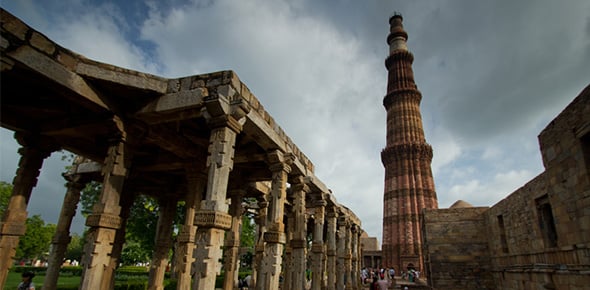Quiz On Ancient Indian History With Answers: Set 13

Questions and Answers
- 1.
Under the Mauryan Empire, which revenue item was collected in cash?
- A.
Bali
- B.
Hiranya
- C.
Pindikara
- D.
Arthashastra
Correct Answer
B. HiranyaExplanation
During the Mauryan Empire, the revenue item that was collected in cash was Hiranya. Hiranya refers to gold or gold coins. This indicates that the Mauryan Empire collected revenue in the form of gold or gold coins rather than other forms of payment such as goods or services. This practice of collecting revenue in cash demonstrates the economic and administrative sophistication of the Mauryan Empire.Rate this question:
-
- 2.
The immediate successors of Mauryas in Magadha were?
- A.
Vakatakas
- B.
Chalunkas
- C.
Sungas
- D.
Satavahanas
Correct Answer
C. SungasExplanation
The immediate successors of the Mauryas in Magadha were the Sungas. After the decline of the Mauryan Empire, the Sunga dynasty emerged and ruled over Magadha from around 185 BCE to 73 BCE. They were able to establish their rule by overthrowing the last Mauryan ruler, Brihadratha. The Sungas played a significant role in the political and cultural history of ancient India, and their rule marked a transitional period between the Mauryan and Gupta empires.Rate this question:
-
- 3.
Seleucus I Nicator was a contemporary of which of the following kings?
- A.
Kanishka
- B.
Augustus
- C.
Samudragupta
- D.
Chandragupta Maurya
Correct Answer
D. Chandragupta MauryaExplanation
Seleucus I Nicator was a contemporary of Chandragupta Maurya. Chandragupta Maurya was the founder of the Maurya Empire in ancient India. Seleucus I Nicator was a Greek general and one of the Diadochi, the successors of Alexander the Great. He ruled over the Seleucid Empire, which encompassed parts of modern-day Iran, Iraq, and Syria. Chandragupta Maurya and Seleucus I Nicator engaged in a conflict known as the Seleucid-Mauryan War, which eventually resulted in a peace treaty and the exchange of territories between the two empires.Rate this question:
-
- 4.
The capital of Kanishka was at Purusha pura. Among the following places, which place had the status of second capital?
- A.
Bhopal
- B.
Mathura
- C.
Panaji
- D.
Ahmedabad
Correct Answer
B. MathuraExplanation
The correct answer is Mathura because it is stated that the capital of Kanishka was at Purusha pura, implying that Purusha pura was the first capital. Therefore, Mathura had the status of second capital.Rate this question:
-
- 5.
Who was defeated by Chandragupta Maurya?
- A.
Rajendra Chola
- B.
Amoghavarsha
- C.
Seleucus
- D.
None of the above
Correct Answer
C. SeleucusExplanation
Seleucus was defeated by Chandragupta Maurya. Seleucus was a Greek general and one of the Diadochi, the rival successors to Alexander the Great. He attempted to expand his empire into India but was ultimately defeated by Chandragupta Maurya, the founder of the Mauryan Empire. This victory allowed Chandragupta Maurya to establish his rule over a vast territory and marked the beginning of the Mauryan dynasty in India.Rate this question:
-
Quiz Review Timeline +
Our quizzes are rigorously reviewed, monitored and continuously updated by our expert board to maintain accuracy, relevance, and timeliness.
-
Current Version
-
Mar 20, 2023Quiz Edited by
ProProfs Editorial Team -
Jul 30, 2014Quiz Created by
Tanmay Shankar
Quiz on Ancient Indian History with Answers: Set 22
Quiz on Ancient Indian History with Answers: Set 22
Quiz on Ancient Indian History with Answers: Set 21
Quiz on Ancient Indian History with Answers: Set 21
Quiz on Ancient Indian History with Answers: Set 20
Quiz on Ancient Indian History with Answers: Set 20
Quiz on Ancient Indian History with Answers: Set 19
Quiz on Ancient Indian History with Answers: Set 19
Quiz on Ancient Indian History with Answers: Set 18
Quiz on Ancient Indian History with Answers: Set 18
Quiz on Ancient Indian History with Answers: Set 17
Quiz on Ancient Indian History with Answers: Set 17
Quiz on Ancient Indian History with Answers: Set 16
Quiz on Ancient Indian History with Answers: Set 16
 Back to top
Back to top


